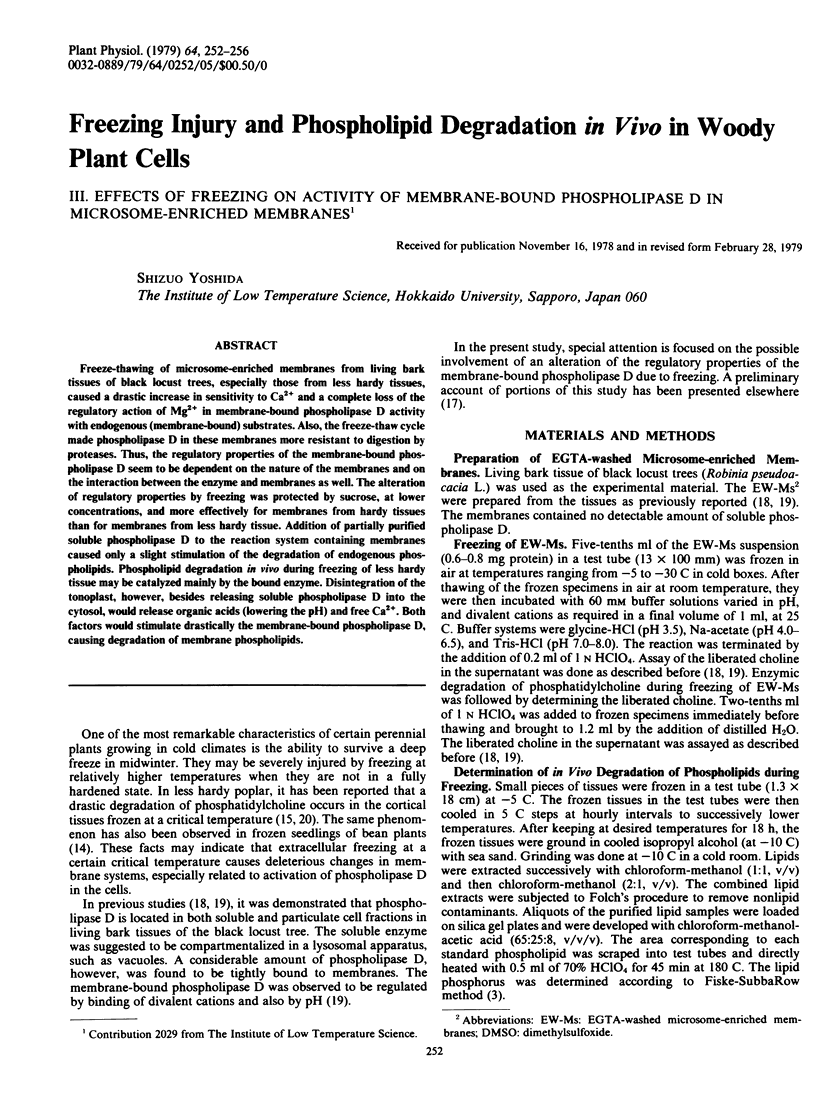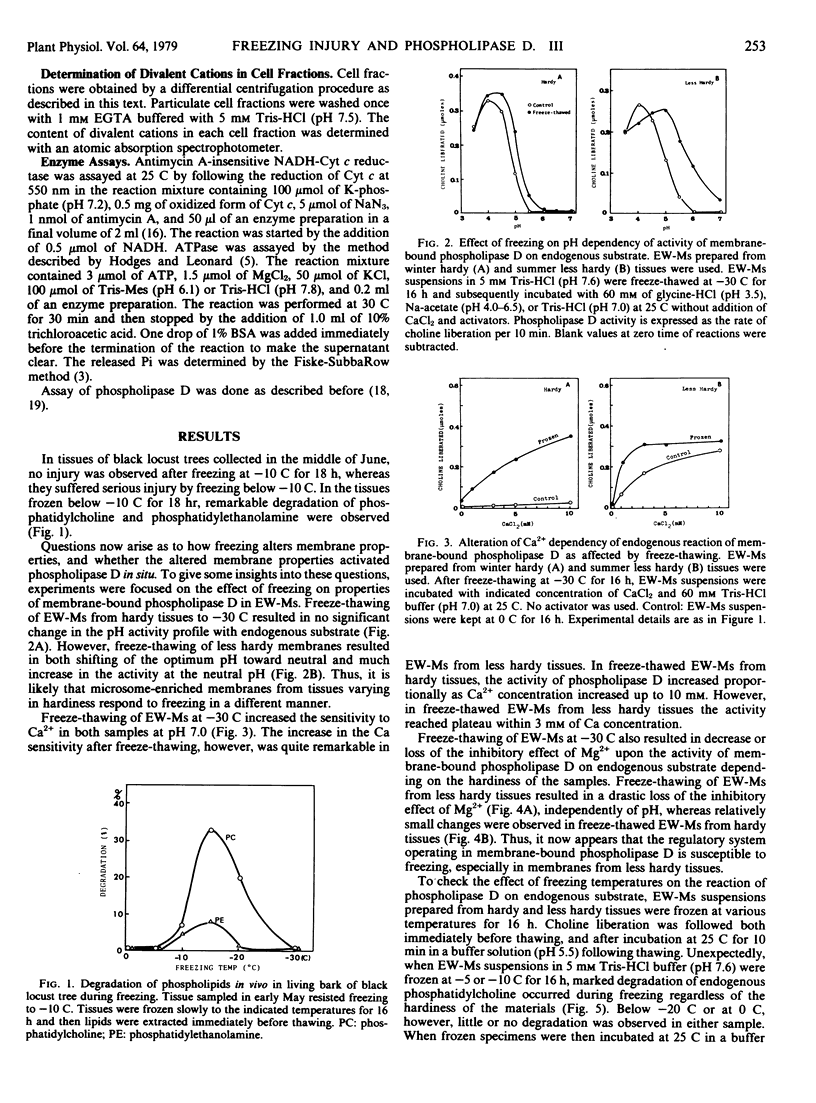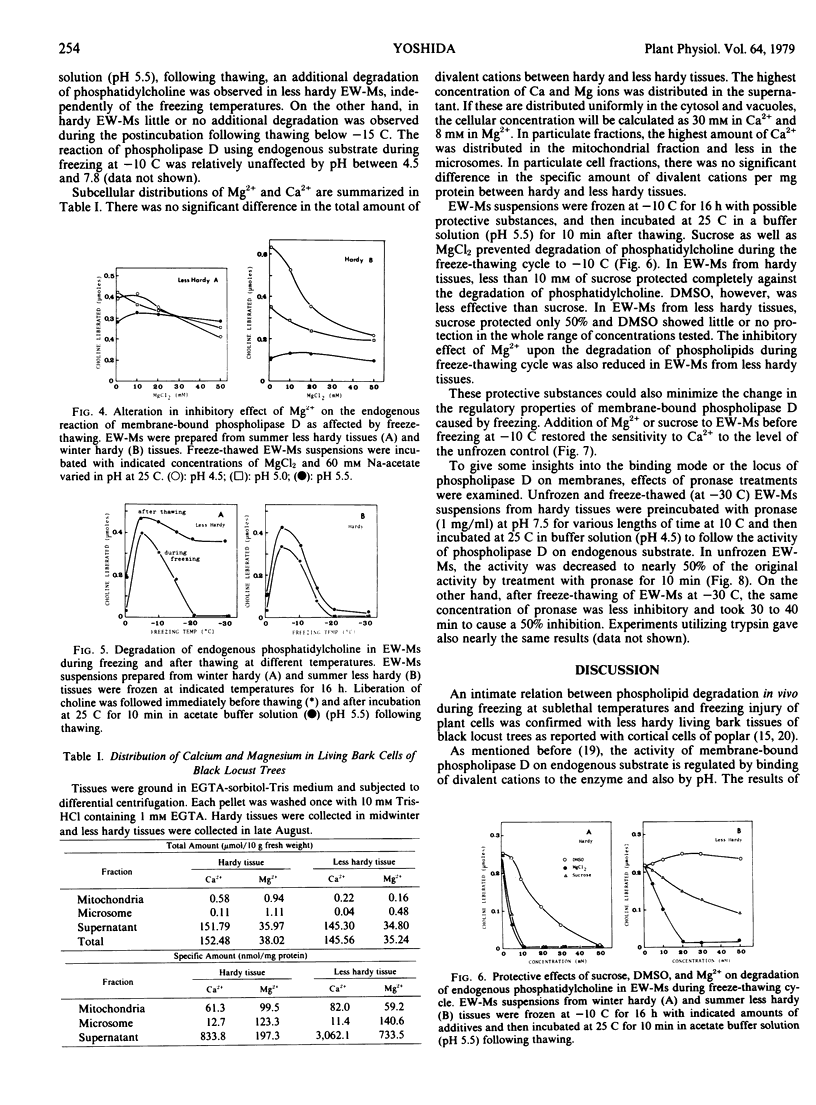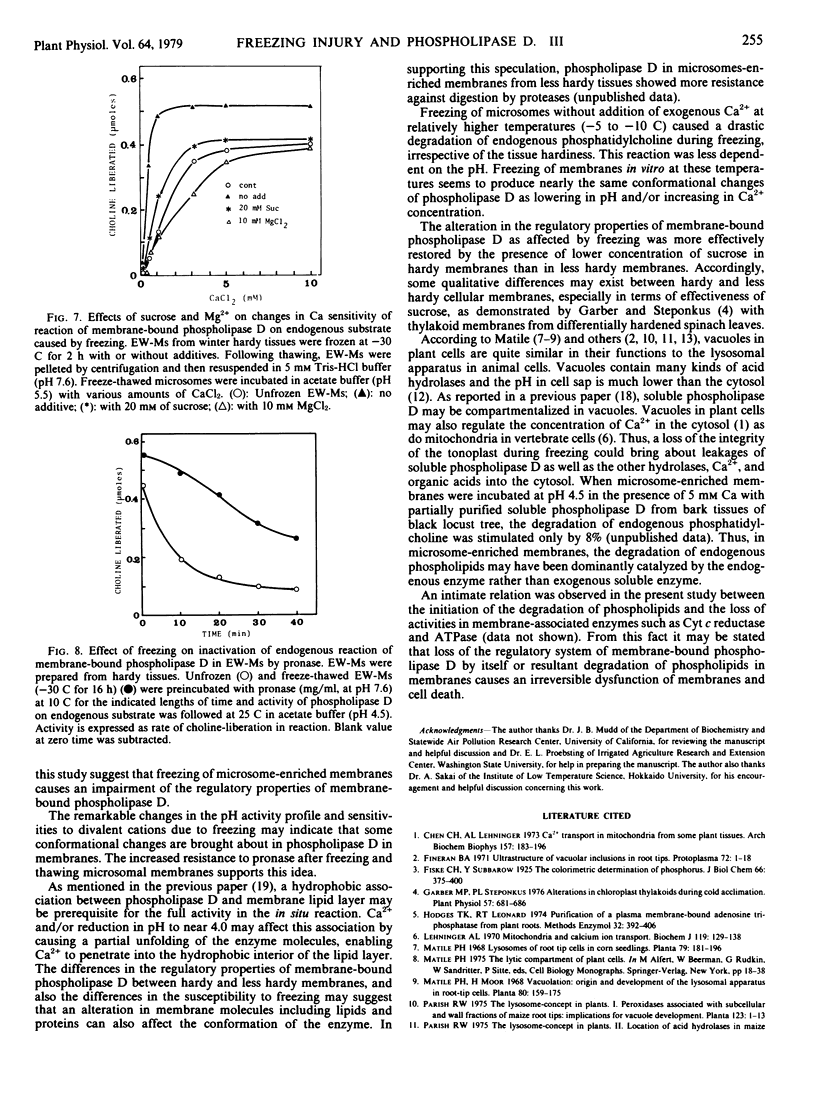Abstract
Freeze-thawing of microsome-enriched membranes from living bark tissues of black locust trees, especially those from less hardy tissues, caused a drastic increase in sensitivity to Ca2+ and a complete loss of the regulatory action of Mg2+ in membrane-bound phospholipase D activity with endogenous (membrane-bound) substrates. Also, the freeze-thaw cycle made phospholipase D in these membranes more resistant to digestion by proteases. Thus, the regulatory properties of the membrane-bound phospholipase D seem to be dependent on the nature of the membranes and on the interaction between the enzyme and membranes as well. The alteration of regulatory properties by freezing was protected by sucrose, at lower concentrations, and more effectively for membranes from hardy tissues than for membranes from less hardy tissue. Addition of partially purified soluble phospholipase D to the reaction system containing membranes caused only a slight stimulation of the degradation of endogenous phospholipids. Phospholipid degradation in vivo during freezing of less hardy tissue may be catalyzed mainly by the bound enzyme. Disintegration of the tonoplast, however, besides releasing soluble phospholipase D into the cytosol, would release organic acids (lowering the pH) and free Ca2+. Both factors would stimulate drastically the membrane-bound phospholipase D, causing degradation of membrane phospholipids.
Full text
PDF




Selected References
These references are in PubMed. This may not be the complete list of references from this article.
- Chen C. H., Lehninger A. L. Ca 2+ transport activity in mitochondria from some plant tissues. Arch Biochem Biophys. 1973 Jul;157(1):183–196. doi: 10.1016/0003-9861(73)90404-9. [DOI] [PubMed] [Google Scholar]
- Garber M. P., Steponkus P. L. Alterations in Chloroplast Thylakoids during Cold Acclimation. Plant Physiol. 1976 May;57(5):681–686. doi: 10.1104/pp.57.5.681. [DOI] [PMC free article] [PubMed] [Google Scholar]
- Hodges T. K., Leonard R. T. Purification of a plasma membrane-bound adenosine triphosphatase from plant roots. Methods Enzymol. 1974;32:392–406. doi: 10.1016/0076-6879(74)32039-3. [DOI] [PubMed] [Google Scholar]
- Lehninger A. L. Mitochondria and calcium ion transport. Biochem J. 1970 Sep;119(2):129–138. doi: 10.1042/bj1190129. [DOI] [PMC free article] [PubMed] [Google Scholar]
- Villiers T. A. Lysosomal activities of the vacuole in damaged and recovering plant cells. Nat New Biol. 1971 Sep 8;233(36):57–58. doi: 10.1038/newbio233057a0. [DOI] [PubMed] [Google Scholar]
- Wilson R. F., Rinne R. W. Effect of freezing and cold storage on phospholipids in developing soybean cotyledons. Plant Physiol. 1976 Feb;57(2):270–273. doi: 10.1104/pp.57.2.270. [DOI] [PMC free article] [PubMed] [Google Scholar]
- Yoshida S. Changes in Microsomal Enzymes and Phospholipid during Dehardening in Stem Bark of Black Locust. Plant Physiol. 1976 May;57(5):710–715. doi: 10.1104/pp.57.5.710. [DOI] [PMC free article] [PubMed] [Google Scholar]
- Yoshida S. Freezing Injury and Phospholipid Degradation in Vivo in Woody Plant Cells: II. Regulatory Effects of Divalent Cations on Activity of Membrane-bound Phospholipase D. Plant Physiol. 1979 Aug;64(2):247–251. doi: 10.1104/pp.64.2.247. [DOI] [PMC free article] [PubMed] [Google Scholar]
- Yoshida S. Freezing injury and phospholipid degradation in vivo in woody plant cells: I. Subcellular localization of phospholipase d in living bark tissues of the black locust tree (robinia pseudoacacia L.). Plant Physiol. 1979 Aug;64(2):241–246. doi: 10.1104/pp.64.2.241. [DOI] [PMC free article] [PubMed] [Google Scholar]
- Yoshida S., Sakai A. Phospholipid degradation in frozen plant cells associated with freezing injury. Plant Physiol. 1974 Mar;53(3):509–511. doi: 10.1104/pp.53.3.509. [DOI] [PMC free article] [PubMed] [Google Scholar]


